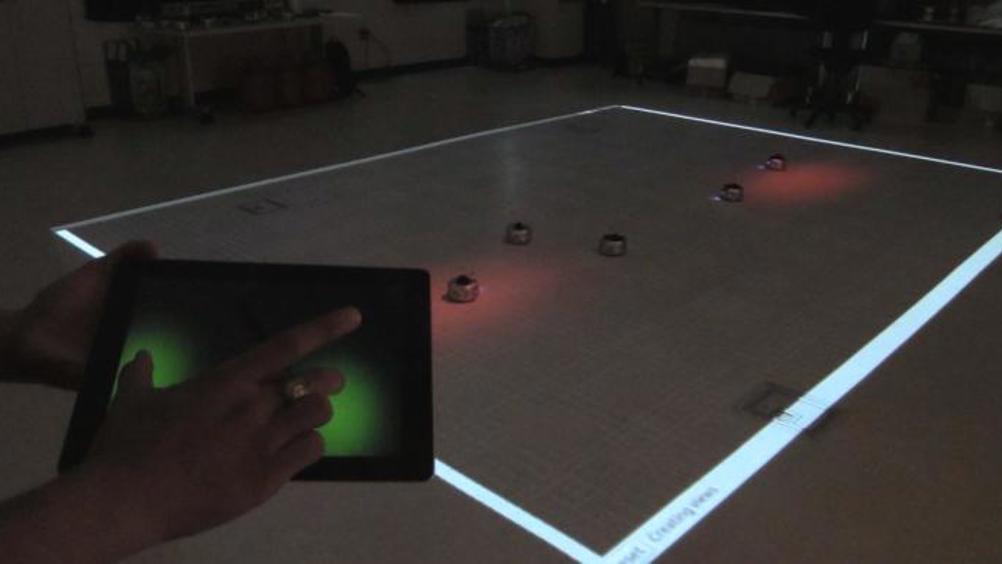Smart tablet gives fingertip control of swarm robots
Researchers have used a smart tablet and a red beam of light to create a system that allows people to control a fleet of robots with the swipe of a finger.

The system developed at the Georgia Institute of Technology in Atlanta, US allows the user to tap the tablet to control where the beam of light appears on a floor.
Swarm robots then roll toward the illumination, constantly communicating with each other and deciding how to evenly cover the lit area.
When the person swipes the tablet to drag the light across the floor, the robots follow. If the operator puts two fingers in different locations on the tablet, the machines split into teams and repeat the process.
The new Georgia Tech algorithm that fuels this system demonstrates the potential of easily controlling large teams of robots, which is relevant in manufacturing, agriculture and disaster areas.
“It’s not possible for a person to control a thousand or a million robots by individually programming each one where to go,” Magnus Egerstedt, Schlumberger Professor in Georgia Tech’s School of Electrical and Computer Engineering, said in a statement. “Instead, the operator controls an area that needs to be explored. Then the robots work together to determine the best ways to accomplish the job.”
Register now to continue reading
Thanks for visiting The Engineer. You’ve now reached your monthly limit of news stories. Register for free to unlock unlimited access to all of our news coverage, as well as premium content including opinion, in-depth features and special reports.
Benefits of registering
-
In-depth insights and coverage of key emerging trends
-
Unrestricted access to special reports throughout the year
-
Daily technology news delivered straight to your inbox










BEAS funding available to help businesses cut energy costs
And not a moment too soon, if the following exchange broadcast last Friday 13th June, on the Radio 4 ´Rare Earth´ program (link below, ~ 17 minutes...